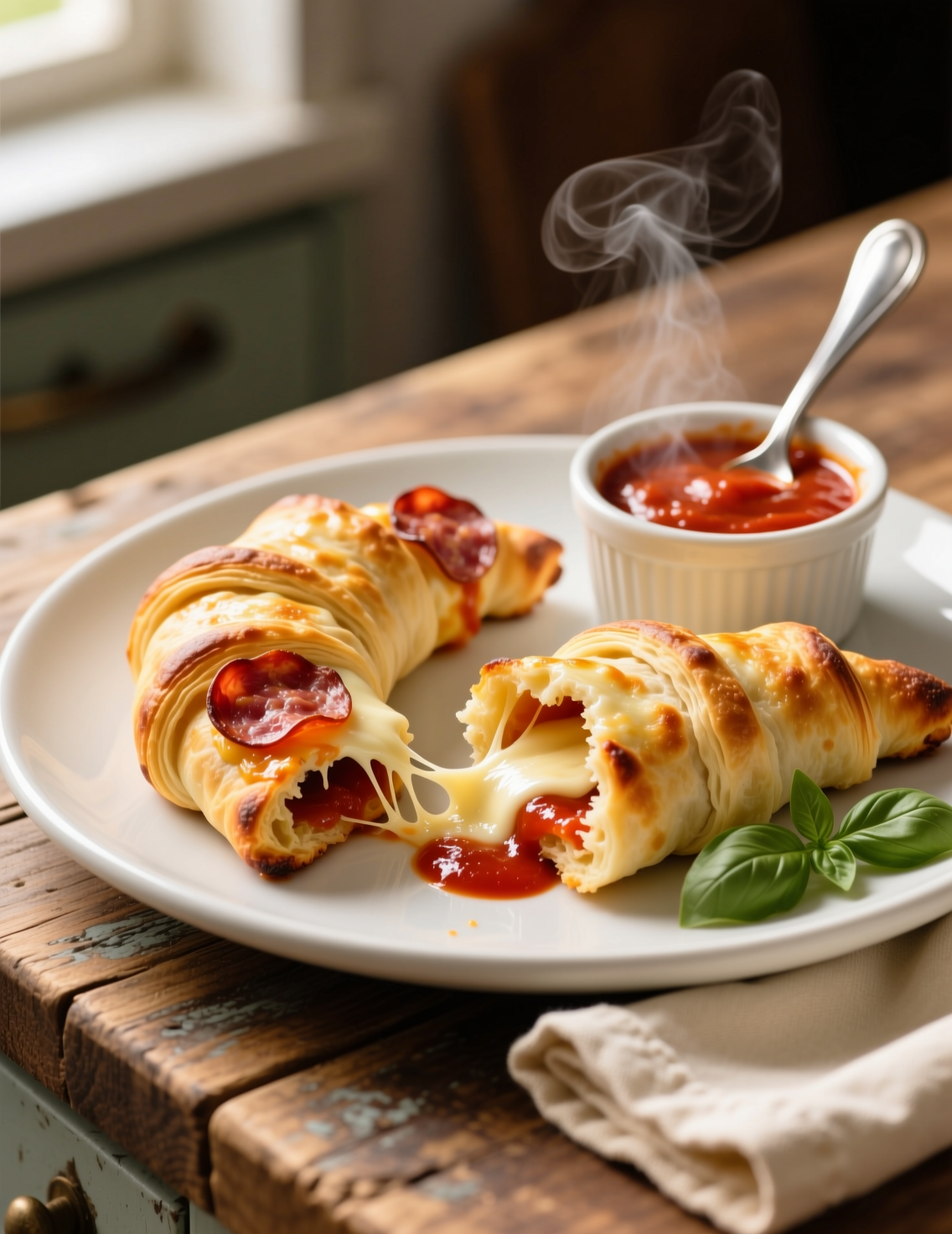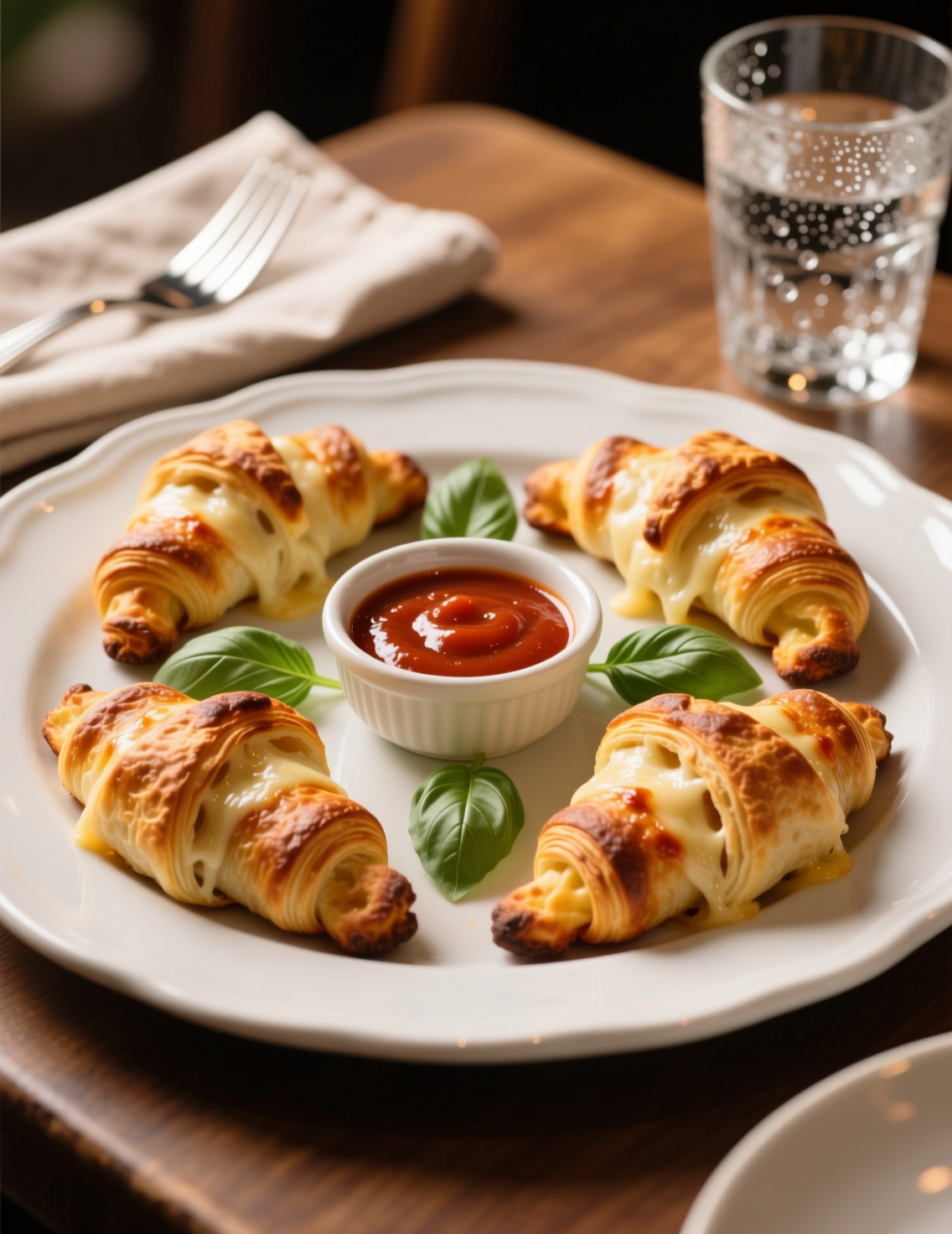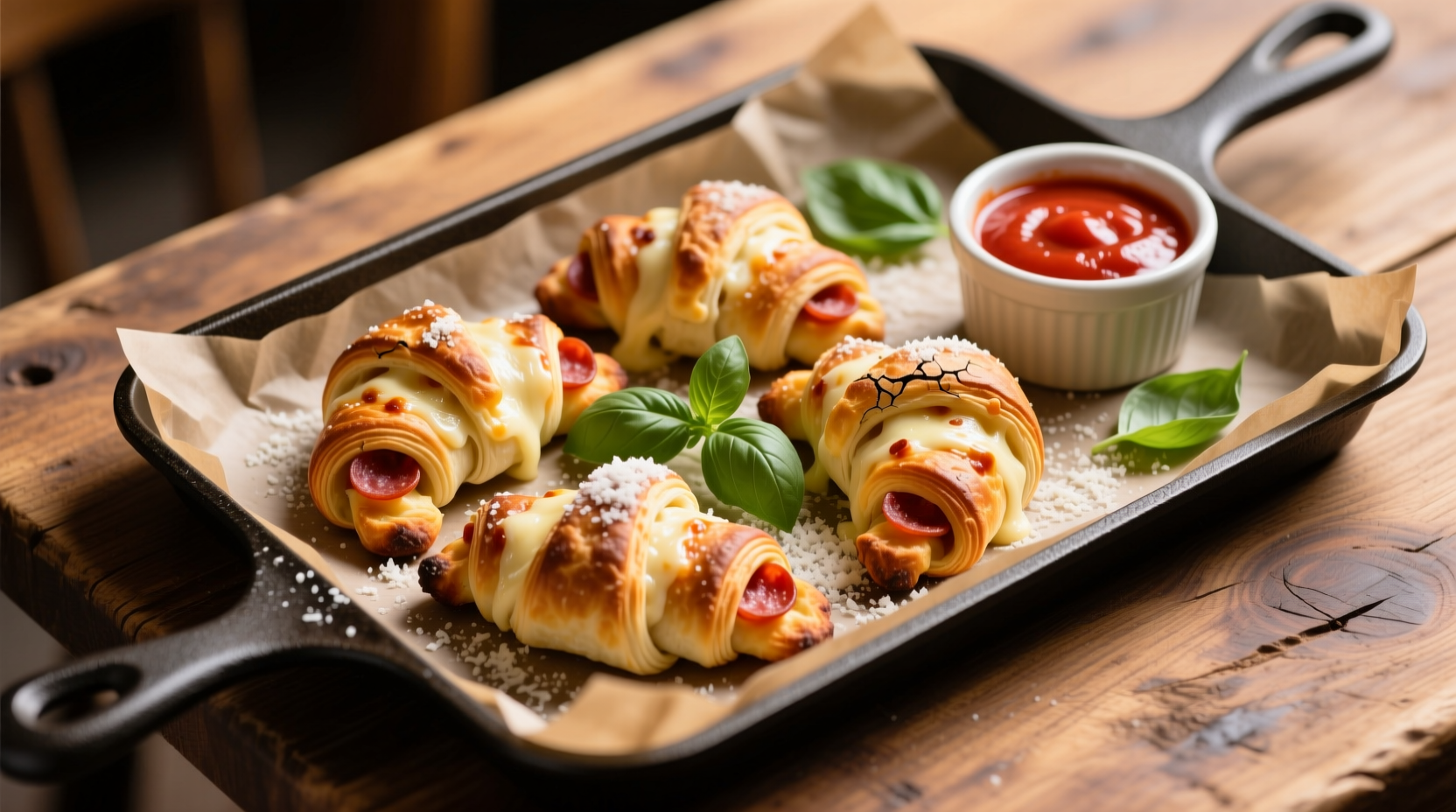Pizza meets pastry. That’s the kind of marriage that makes kitchens feel alive. The recipe for juicy pizza crescent rolls might look simple at first glance, but as with most deceptively humble dishes, the devil hides in details. Done right, these rolls give you the crunch of golden pastry, the chew of melted mozzarella, and the rich burst of seasoned tomato sauce. This article digs deep into the craft, with insights not just for home cooks but for professionals who obsess over dough, heat, and flavor balance.
Why Pizza Crescent Rolls Work So Well
Crescent dough was never really designed for pizza fillings, but that’s exactly why it works. Its buttery layers create a puff that traps steam and moisture inside. The fillings cook in their own little chamber, much like a miniature calzone but lighter, more playful.
The genius lies in portion control. Each roll becomes its own serving, so you avoid the uneven distribution issues common in large pizzas. For chefs in catering or casual dining, that consistency translates into less waste and faster plating.
Ingredients That Decide Everything
The base recipe doesn’t ask for much. Crescent roll dough (store-bought or house-made), mozzarella, pizza sauce, and pepperoni or vegetables. But professionals know one ingredient swap can shift the whole dish from forgettable to unforgettable.
For example, a chef at a Chicago gastropub told me he uses fire-roasted tomato puree instead of jarred pizza sauce. The smoky acidity cuts through the buttery dough. Another baker prefers low-moisture mozzarella mixed with provolone, because it adds depth and prevents the dreaded cheese leakage during baking.
Herbs matter too. A sprinkle of oregano inside the roll before sealing can bloom beautifully under heat. Fresh basil, however, tends to wilt and release water, often leading to soggy pockets. That tiny detail makes or breaks the final bite.

The Science of Filling Juiciness
Juiciness in this dish is tricky. Too much sauce, and you’ll end up with soggy bottoms. Too little, and the roll feels dry, bready. The sweet spot is around 1 tablespoon of sauce per roll, no more. Tests done by food scientists at the USDA show doughs with higher fat content resist moisture seepage better than leaner ones. Crescent dough, high in butter and shortening, falls right into the safe category.
Cheese plays its own role. Mozzarella melts into long, stretchy strands, but it doesn’t release heavy oils if you choose the low-moisture type. Fresh mozzarella would drench the dough. Professionals avoid it here unless they partially dry it first.
Step-by-Step Recipe (4 Servings)
Ingredients
- 1 can refrigerated crescent roll dough (8 triangles)
- 8 tbsp pizza sauce
- 1 cup shredded mozzarella cheese (low-moisture)
- 16 slices pepperoni (or sautéed veggies for vegetarian option)
- 1 tsp dried oregano
- 1 tbsp grated Parmesan
- Olive oil spray or brush
Instructions
- Preheat oven to 375°F (190°C). Line a sheet pan with parchment.
- Separate crescent dough triangles. Place them on the sheet, wide end facing you.
- Spread 1 tbsp sauce near the wide end of each triangle. Don’t go to edges.
- Add cheese, pepperoni, and a sprinkle of oregano.
- Roll tightly from wide end to tip, tucking sides as you go.
- Brush lightly with olive oil. Sprinkle Parmesan.
- Bake 11–13 minutes, until golden brown and bubbling.
- Rest 3 minutes before serving.
This yields 8 rolls, perfect for 4 servings (2 rolls each).
Professional Tweaks That Elevate the Dish
Restaurants rarely follow recipes straight from the box. They tweak, test, and sometimes ruin a dozen trays before hitting perfection. One common pro trick: brush the baked rolls with garlic butter right out of the oven. It gives them a glossy finish and an aroma that makes guests lean forward at the table.
Another technique is par-baking. You bake the rolls halfway, cool them, then finish them off when orders come in. This gives shorter wait times while keeping the crust crisp. Many busy kitchens rely on this method for consistency.
A more advanced tweak involves adding a thin layer of provolone under the sauce. That layer acts as a moisture barrier, protecting the dough from soaking. It’s the same technique used in deep-dish pizza to keep crust from collapsing.
Balancing Flavors for a Wider Audience
Professional chefs think beyond pepperoni. Vegetarian and vegan diners expect inclusion. A mix of sautéed mushrooms, bell peppers, and spinach works beautifully if you first cook off the water content. Nobody wants a roll that bursts into liquid when bitten.
For vegan versions, dairy-free mozzarella melts surprisingly well these days. Brands using tapioca starch and coconut oil mimic the stretch of cheese. Nutritional yeast sprinkled inside can boost umami. The key is moderation—too much vegan cheese and you risk gumminess.

Nutritional Insights
Each roll (standard recipe) contains around 160–180 calories, depending on cheese type and filling. That’s lighter than a standard pizza slice, which averages 280 calories. Portioning in this format gives control over nutritional values.
For professionals running health-conscious menus, using turkey pepperoni lowers fat by about 40%. Whole wheat crescent dough, though harder to find, adds fiber without compromising too much texture. These swaps make the dish more appealing to modern diners who demand indulgence but with fewer regrets.
Common Mistakes and Fixes
One mistake even experienced cooks make is overfilling. The instinct says more cheese equals more joy. In reality, it equals burst seams and messy pans. Less is truly more here.
Another pitfall is baking at too low a temperature. Crescent dough needs an initial blast of heat to puff properly. Anything below 350°F will leave the rolls pale and dense. If in doubt, bake hotter and shorter.
A final misstep: storing incorrectly. These rolls go soft fast if covered while hot. Always cool them fully before wrapping in foil. To reheat, use an oven, never a microwave, or you’ll lose the crisp snap of the crust.
Emerging Trends With Crescent Rolls
Crescent rolls are moving beyond breakfast tables. Trend reports from the National Restaurant Association in 2024 show a rise in hybrid comfort foods—classic dishes made more portable or playful. Pizza crescent rolls sit right at the heart of that trend.
Some food trucks now sell “loaded crescent rolls,” stuffing them with chicken tikka, BBQ brisket, or even mac and cheese. This flexibility shows how adaptable the base recipe is. Once chefs master the sealing technique, the filling options are endless.
Expert Tips for Presentation
Food that tastes good isn’t enough. In professional kitchens, presentation sells. Serve pizza crescent rolls in a cast iron skillet lined with parchment for a rustic feel. Garnish with fresh parsley and a small ramekin of warm marinara for dipping.
If aiming for upscale plating, slice the rolls diagonally, showing off the spiraled filling. Drizzle with basil oil, and suddenly a humble roll looks like fine dining. Contrast of textures and colors always wins.
Answering Common Questions
Can you freeze them? Yes. Freeze unbaked rolls on a tray, then store in freezer bags. Bake directly from frozen, adding 3–4 minutes to cooking time.
Can you make dough from scratch? Absolutely. A simple enriched dough with butter and milk works. But crescent dough’s laminated texture is tough to mimic without professional equipment.
How long do leftovers last? Up to 2 days in the fridge. Beyond that, quality drops sharply.
Conclusion
Juicy pizza crescent rolls may sound casual, almost whimsical, but their success relies on precision. The right dough, the right moisture balance, the right bake—each detail matters. For professionals, this dish offers a versatile base for experimentation, whether catering to families, vegans, or gourmet diners.
In the end, food like this works because it taps into memory. Pizza, pastry, cheese—comfort staples that spark nostalgia. But when crafted with skill, they become more than snacks. They become small lessons in culinary restraint, proving that sometimes the tiniest bites carry the loudest flavors.
FAQs
Can I use homemade dough instead of canned crescent rolls?
Yes, you can, but crescent-style laminated dough is tricky to make without pro equipment.
How do I keep pizza crescent rolls from getting soggy?
Use low-moisture mozzarella and avoid overloading with sauce or watery veggies.
Can these rolls be prepared ahead of time?
Yes, you can assemble them earlier, refrigerate, and bake just before serving.
What’s the best way to reheat leftovers?
Always reheat in the oven at 350°F for 5–7 minutes to keep them crisp.
Can I freeze unbaked pizza crescent rolls?
Yes, freeze them raw on a tray, then bag them and bake straight from frozen.
How many rolls does this recipe make?
The recipe makes 8 rolls, which equals 4 servings (2 per person).
What fillings work best besides pepperoni?
Sautéed mushrooms, spinach, or even BBQ chicken work well as alternatives.
Are pizza crescent rolls healthier than regular pizza?
Generally yes, since each roll has fewer calories than a full slice of pizza.
How long can I store baked crescent rolls?
They last up to 2 days in the fridge but are best fresh.
What’s the ideal dipping sauce for serving?
Warm marinara or garlic butter dip works perfectly with the rolls.

Mariana is a passionate home cook who creates delicious, easy-to-follow recipes for busy people. From energizing breakfasts to satisfying dinners and indulgent desserts, her dishes are designed to fuel both your body and hustle.
When she’s not in the kitchen, she’s exploring new flavors and dreaming up her next recipe to share with the Foodie Hustle community.

